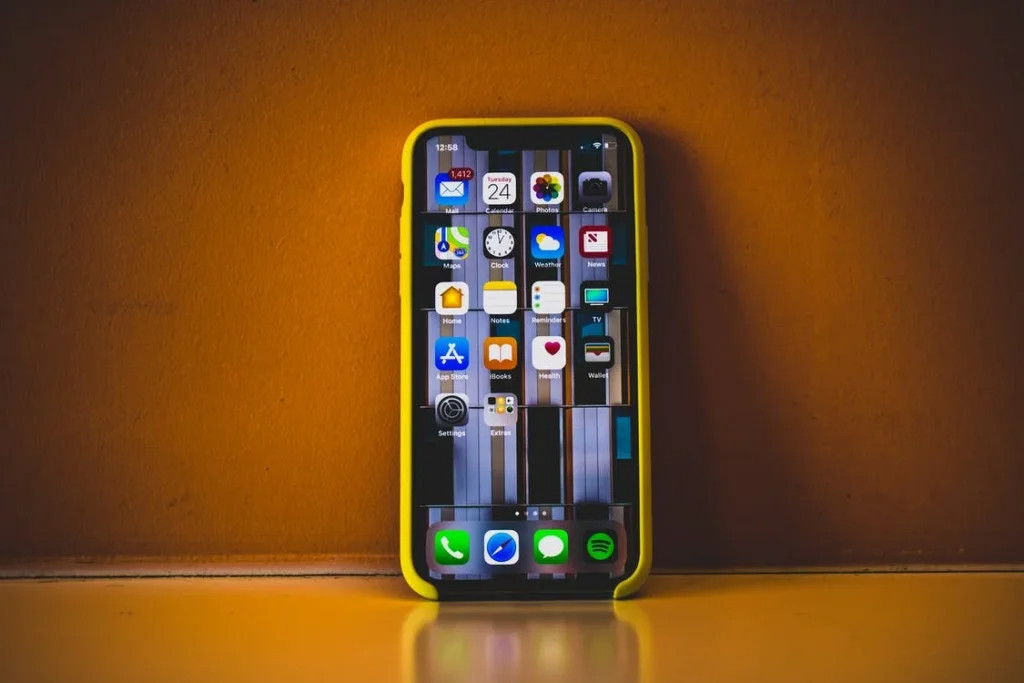A mobile responsive web design prioritizes the mobile experience instead of presenting it as a supplementary component to the desktop site. These methods became crucial during the last ten years. Currently, more than half of all Internet traffic is conducted through cellular devices, which includes about 45% of online shopping. This figure is anticipated to increase only if mobile websites become increasingly embedded and the User Interfaces (UI) become intuitive. Let’s see how to make your website mobile friendly.
Importance of Making a Site Mobile-Friendly
Smartphone technology has rapidly become a regular part of daily life. Almost every day people are surprised by their phones. From hospitals to cinemas, it’s typical to look at phones in the hallways. This tendency grew steadily over the past decade. Almost all website visitors in the world now go through smartphones.

Today, 70% of all websites are indexed using smartphones. This explains how Googlebot indexes a web application rather than a desktop version of it. Therefore, if you have no mobile-friendly website design, then it may lose the most web traffic.
In 2017, mobiles constituted 57.64% of global online traffic. This figure will rise to 80 percent in 2018. These numbers are only an example of the increasing dependence by society on the mobile experience. The digital revolution is gaining popularity as people turn to mobile devices for information collection. This means brand relevance needs to evolve.
The Advantages of Mobile-Friendly Design
Mobile-friendly websites increase branding visibility. If people are interested in your brand, you must make it easily accessible to the target audience. They want an answer when asked. Mobile Friendly web design can make your site accessible and provide easy-to-use ways to reach and increase the value for money. Research has proved that mobile SEO helps in mobile search engine management and optimizing the web page for mobile and desktop users.
The best advantages of designing websites for mobile devices are easy user navigation. Just make sure that the website is prominent on Google, free to use, and directs users to your other platforms.
Read about: Why Invest in Design? The Secret to Business Success in 2025
Interchangeable Experience with Mobile Apps and Website
Theories and research have suggested an interchangeable experience between mobile apps and websites. The 2018 Google survey identified interesting customer behaviors related to mobile apps and website usage. People no longer prefer websites versus apps; they prefer both!
If you grow both of those, it will give a greater ROI and likely reduce your finances. Several e-commerce companies are pushing their products and services through apps and websites. A new survey shows that mobile shopping leads to around 5-10 visits per month. Most of this customer traffic has, at some point, a transition between the website and the application. The majority of users prefer mobile websites as much as mobile apps.
Read about: How to Find a UI/UX Designer for an eCommerce Website | 2025
20 Best Tips to Make a Mobile Friendly Website
Now the question arises; What is the best way to make a web page mobile-friendly? We know that mobile-friendly websites are the easiest way to attract more traffic, but how do we do that?
Let’s have a look at these 20 best tips to learn how to make your website mobile friendly. This list includes the latest developments in mobile technology and how they address it based on the latest trends.
- Optimize Images
- Optimize Loading Times
- Use Html5
- Server Response Time
- Avoid Too Many Plugins
- Keep it Simple
- Make it Responsive
- Include Meta Tag
- Stop text-blocking ads or Pop-ups
- Increase Website Speed
- Make it easier to Navigate Information
- Don’t Use Flash
- Make Buttons Visible
- Use Large Font Sizes
- Limit Form Fields and Text Input
- Thumb Friendly
- Use Mobile First Approach
- Minimize Menu
- Collapse Secondary Content
- Use Recommended Size Dimensions
1- Optimize Images
All the sites have pictures. It is certainly necessary that all the loading speeds of these images in the system are optimized. Always use appropriate photo formats – AVIF JPEG 2000, JJPEG XR, or WebP. It can also be a major speed boost to your mobile website. The image can be compressed by using compression software or using compressed image files. The easiest way of reducing load time would be using lazy loading on mobiles. Lazy-loading allows the removal of off-the-shelf image files for a specific use.

Important Note! Please do not lazy-load the information above the fold to prevent the loading problem of Googlebot.
2- Optimize Loading Times
It is important to speed up your website speed and loading times on smartphones. One study published in Google’s blog showed that smartphone users focus primarily on their screen for 4-6 seconds. This means your site will have fewer visitors if it takes longer to load. You will lose the attention span of visitors. Therefore, use faster programming tools behind your website’s interface.

3- Use Html5
Before Html5, Flash was extremely popular among young web developers. But Html5 has significantly replaced Flash. Particularly in smartphones, which did not support Flash. When adding media to a site, use HTML 5 because it provides easier multimedia integration. This feature allows the same content to be accessed across devices and provides a much faster loading time for smartphones and tablets.
Learn more about Top 22 Free Website Builders For Small Businesses
4- Server Response Time
Typically, a successful loading speed depends upon the speed your web host can handle. When the server takes too long to deliver your request, it will be notified through page speed intelligence. You may want to talk with the web hosting company for help to get this done.
5- Avoid Too Many Plugins
You should take great care when using plugins. It may slow you down. Do two tests to find out whether the website has any plugin support or not, for it to function properly. You may even try query monitoring for WordPress site issues.
6- Keep it Simple
Complicated websites with much clutter may confuse any screen and make navigating your website harder. Keeping things simple is always the best way of reaching out to customers. Invest in the most simple way possible to find exactly what you need. A simple layout can be used to improve the loading times by allowing fewer file loads in the browser. Likewise, use it with the menu you have. If you’re creating a website that is full of pages and categories, you can provide a huge menu on your screen. In mobile, however, the only important thing is to reduce the choices.

7- Make it Responsive
Web developers believe that creating responsive websites is the best method of achieving websites that are compatible with desktop computers as well as smartphones. This happens since responsive websites contain the same content on any device you are accessing them on. However, it responds with its devices and optimizes its visual appearance following these devices. The way a webpage displays changes according to the screen’s size. The same picture displayed on your desktop may appear above a screen when you use your smartphone.
8- Include Meta Tag
This viewport meta tag provides an excellent method for controlling your mobile page. Whenever your website appears at the same size as the desktop screen, you need to flip the page awkwardly. The viewport meta tag tells Web browsers how wide the webpage is for the screen from which it comes. It’s fairly easy for someone using HTML to include a meta tag in your website.
9- Stop Text-Blocking Ads or Pop-Ups
No one likes seeing continuous ads and pop-ups while navigating a website. It is annoying if a large advertisement blocks your view. Most people will not even try and see anything to minimize the popups, just click and go find another site instead. For the best user experience, you can stop advertising and pop-ups that block any content from your site completely. You can disable them on mobile devices or set them up so a popup will only appear after you scroll down and not after you click.
Read more about: Design Consistency Guide: Best Practices for UI and UX
10- Increase Website Speed
If you recall when dialup was used and the site would slow down. However, we have all taken speedier internet as something of a necessity. An investigation conducted by Google found that most sites are viewed within 5 seconds and few people wait for a moment before clicking. Website developers can use several techniques to speed things up for visitors.
11- Make It Easier to Navigate Information
Most smartphone users search for specific information—like the answer to a question, or the address of a nearby café. In this situation, they want to get the information quickly. Think of what information your mobile visitors are likely seeking on a webpage. Place it anywhere obvious for them to point out. Please look for FAQs when visiting a website. You can’t put all of your answers right up front on your website, so in this case, FAQs work as additional information for your visitors so they won’t have to jump to another web page.
12- Don’t Use Flash
Using Adobe Flash on a website is a bad practice. It slows down the loading time, and most browsers or devices don’t even support it. No iPhone and No Android devices support flash. Therefore, a website built without Flash animations is left out. Many designers know not to use flash when building websites. You could simply use the latest technology and create a cool website design.
13- Make Buttons Visible
You must provide as much ease as possible to your visitors. For this reason, making buttons visible is important. It is also important that you can press the button at the same time when trying to select another button the best way to save the visitors from wasting their time using bigger buttons. And take note of how it appears on your screen. These things are often checked during website usability testing.
14- Use Large Font Sizes
It can be harder for a person to read with a tiny font. It is a good idea to use an 8-inch font in a web design, but you can try different out to make it more noticeable. You should use the standard typeface. The fonts you download will reduce the time it takes a site to download.
15- Limit Form Fields and Text Input
Text inputs are probably the largest barrier to mobile access. How many people complain about having to navigate the alphabetic menus on the phone? For these reasons, it is important to minimize the fields in the form. Autofill is available which allows users to guess addresses from their mail or provide prepopulated options for common email suffixes.
16- Thumb Friendly
The study shows that your thumbs interact with mobile devices by at least 75%. This entails every scrolling, clicking, swiping, and texting. The remaining fingers support the backside. Take into account the fact that some people use the smartphone on an older phone while doing things. Therefore designers must consider thumbs-in for mobile interaction. The fingers are the biggest digits making the data extremely imprecise. In simpler words, your UI design should also take into account the placement of fingers on the mobile.
17- Use Mobile First Approach
As mobile web browsing is nearly as popular as the desktop, developers must stop considering desktop sites as essentially desktop versions. So mobile-first websites have become a common practice in the past years. By focusing on mobile experiences, designers can control design decision-making because their options are limited in a good way. Mobile users interact with their hands often without tapping or swinging which makes viewing data more complicated than a tablet computer. So creating a website that only focuses on the desktop version is a mistake.
18- Minimise Menu
Navigation is a further area that may quickly become difficult if users have several choices and options. While desktops often contain a full-width navigational window that contains multiple menus and submenus it is now standard to display everything within a single hamburger icon. As a result, many mobile web headers are limited in size. Typical for the style of the actual menu – one way is the sliding sidebar that provides navigation options to an area of the screen.
19- Collapse Secondary Content
The desktop website often includes a good deal of information about the content. But mobile web designers must reduce or shorten irrelevant content. Collapsing content means providing optional explanations through icons such as triangles or plus signs that expand and reveal hidden content. Although removing content may seem like bad things, the benefits of simple browsing enhanced by persuasive headlines far outweigh potential errors.
20- Use Recommended Size Dimensions
On handheld devices, space is often less available. It’s best to consider size limitations before you begin your project. This will help prevent later conflicted projects. Mobile screens will be different compared to desktops. The most common is 360640 (aspect ratio 9:16).
This will show you which devices your users are looking for, and you must make your websites responsive enough for the changes that happen. When calculating font sizes for mobile design, a minimum of 16px should be used.

The Difference Between App Design And Mobile-Friendly Web Design
The difference between e-commerce apps and mobile apps is unclear, but the situation is obvious. For a successful mobile-friendly strategy, you have to ensure a successful mobile presence. We live in an Internet world where everyone has phones and a global world where most people have phones rather than toothbrushes.
So to be on top of the competition, you need to ensure your mobile presence. It’s easy to accomplish using apps or a mobile responsive design. Your branding should work both ways. Similar strategies are used in mobile app development to capture a large audience.

How to Know if My Site Is Already Mobile-Friendly?
When building a website or updating it over a couple of years, you may be thinking about whether it has achieved a mobile-friendly design or not. If you’re considering making your site mobile-friendly, you may need to check out the results you are getting from it. It’s all in the little things. Google provides mobile test software. You can also have an overview of how a website looks on the phone and suggestions for improvement. A responsive website will respond to user requirements according to the device they’re using (mobile in this case).
Remember, you have to perceive things from the customer’s perspective. Also, feedback is the best way to find out where your site stands among others. You can add surveys to your website to get statistical conclusions regarding your website performance. If you find it unattractive to mobile users, then it will be time to consider making your website mobile-friendly.

How to Choose the Best Mobile Friendly Solution?
In determining how to improve the mobile search experience, Google has three mobile configuration options for you. This section will briefly describe the best possible configurations that provide mobile-friendly solutions.
Dynamic Service
One method of making a website mobile responsive is dynamic serving. In dynamic services, the servers respond to different HTML and CSS based on their browser depending on the browser type and the mobile device the request was made from. This method requires more time since two versions of an identical website exist. This will be a very complicated task. In a way, you must be able to stay on top of the latest gadgets. If not, the website’s desktop version will load on mobile phones. A dynamic service can be considered more attractive when it comes to a mobile solution for a website.
HTML and CSS
The HTML language is the most basic element of any website. If you know anything about HTML, it defines the structure of the website. HTML and CSS allow browsers and websites to display your pages in various formats, which allows for the adaptation of the content of pages with different sizes on different devices. You can use media query tools to monitor how sites work on different device types. The media rule tells the browser what page it will display if certain conditions have been met.
Separate Mobile Sites
This method consists of putting together separate mobile-friendly sites for viewing on mobile. Mobile users are directed to a mobile-specific URL with the following format: example.com. Generally, the mobile app offers fewer pages than the original site but also offers more responsive navigation. If you will not use the mobile configuration in your site, it will cause problems and could affect your SEO negatively too.
Must Read this guide on The Best Framework for Mobile App Development
Conclusion
With the increase in the usage of smartphones, optimizing your business components to be standardized with the customer’s usage perspective is becoming important. Mobile-friendly website designs are becoming common, and you have to stand out among competitors.
We need to implement an adaptive plan, Including the viewport meta tag, removing the clutter from websites, and subtle pop-up implementation to improve web page performance. Along with these, other simpler techniques can help you create a perfect mobile-friendly website. A little effort in the site design will result in tremendous outcomes. We hope you learned all the tips and tricks to design a mobile-friendly website in this blog.
FAQs
What Are Core Web Vitals?
Core Web Vitals is metrics measuring a web page’s loading speed and visual stability. Together with mobile-friendliness, safe security, and the absence of pop-ups, these new signals are now used for the evaluation of website performance and to make final decisions about ranking pages. Google’s benchmark speed on mobiles is measured at 1.2 seconds. Although that is incredibly ambitious, it’s possible.
Does Mobile Friendly Interface Affect SEO?
Mobile friendliness is crucial for SEO. Essentially, it’s an indicator for both Google’s and Bing’s search engine algorithms. Mobile-friendly generally websites overtake less mobile websites. It will help you achieve a higher SEO score.
What Is Portrait-Oriented Optimization?
Mobile websites may technically operate in Landscape mode, with devices turned sideways. Although, portrait mode tends to be more common. The Blackberry introduced emulation in the 2000s to the two-hand mobile handset hold, and users prefer the one-hand portrait mode for this feature. This narrowness makes portraits ideal for a single-column layout. The layout is arranged in sequential order from the top of the site to the bottom. Although content alignments generally remain centralized, alternative right reasons can create visual interest and illusions.
